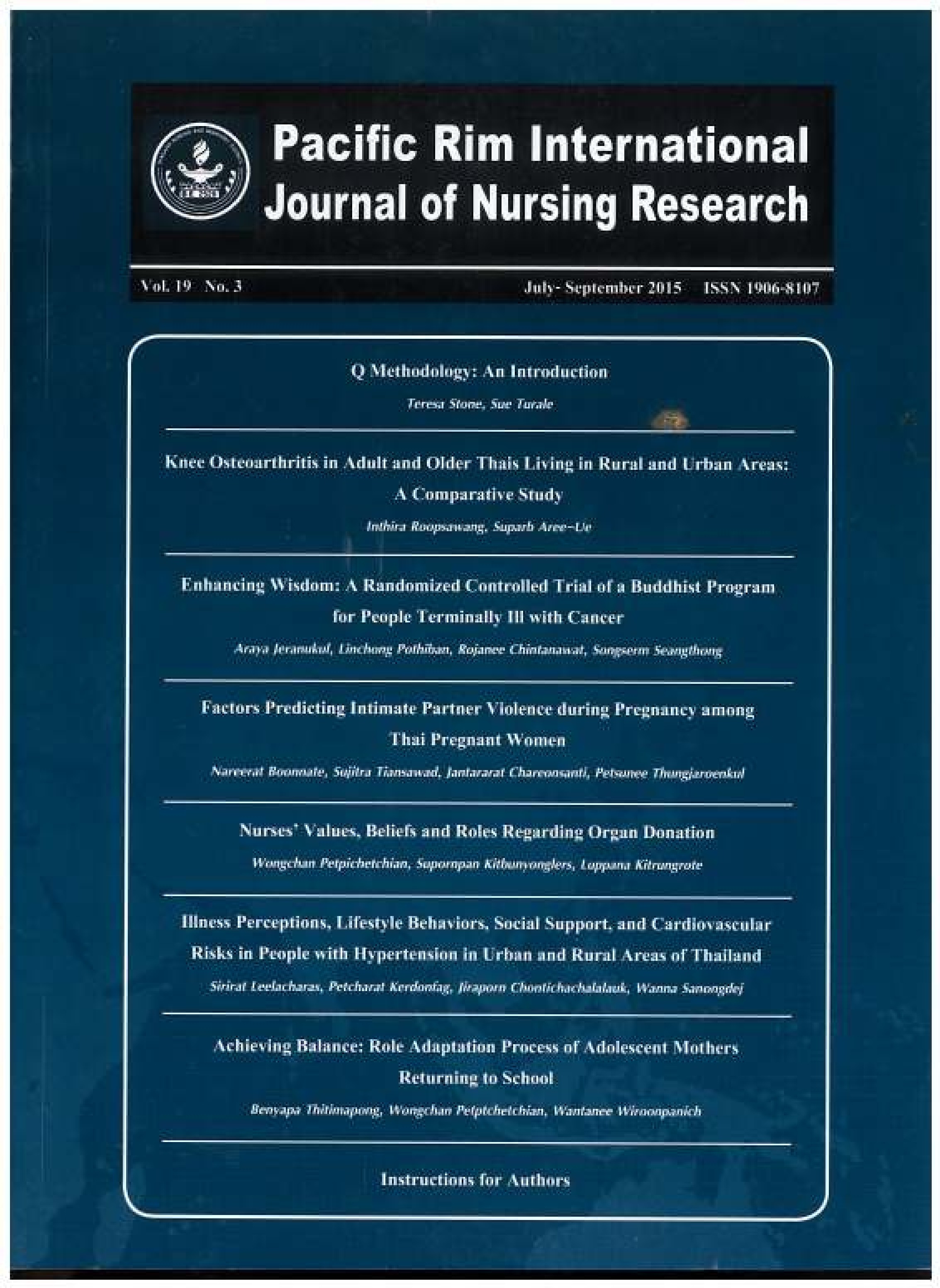Knee Osteoarthritis in Adult and Older Thais Living in Rural and Urban Areas: A Comparative Study
Keywords:
Adults, Coping behaviors, Illness representations, Knee osteoarthritis, Older persons, Rural areas, Thailand Urban areasAbstract
Knee osteoarthritis is the most common cause of disability in adult and older adults, and it increases as people age. Illness representations and coping behaviors may have decisive impacts on management of this chronic disease. The aims of this study were to describe the differences in illness representations and coping behaviors among adult and older Thais living in rural and urban areas and to examine the relationship between illness representations and coping behaviors among those individuals in rural and urban areas. One hundred and sixteen participants with knee osteoarthritis living in rural areas and 112 individuals living in urban areas responded to the Brief Illness Perception Questionnaire and the Knee Osteoarthritis Coping Behavior Questionnaire. Descriptive statistics, t-test, and Pearson’s product moment correlation coefficient were used to analyze data.
There was no significant difference in illness representations between two groups, but the participants living in rural areas had a significantly lower mean score of treatment control and emotional representation subscales than those living in urban areas. The participants from urban areas had a significantly higher mean score of total coping, cognitive-focused coping subscale, and emotional adjustment than those living in rural areas. A negative correlation between illness representations and coping behaviors was found in the rural group, but no significant correlation was observed in the urban group. Our findings suggest that a further intervention which emphasizes the need for raising awareness of knee osteoarthritis and promoting appropriate coping behaviors would be beneficial.
Downloads
Published
How to Cite
Issue
Section
License
Copyright: The Pacific Rim International Journal of Nursing Research, Thailand Nursing & Midwifery Council has exclusive rights to publish, reproduce and distribute the manuscript and all contents therein.








.png)



